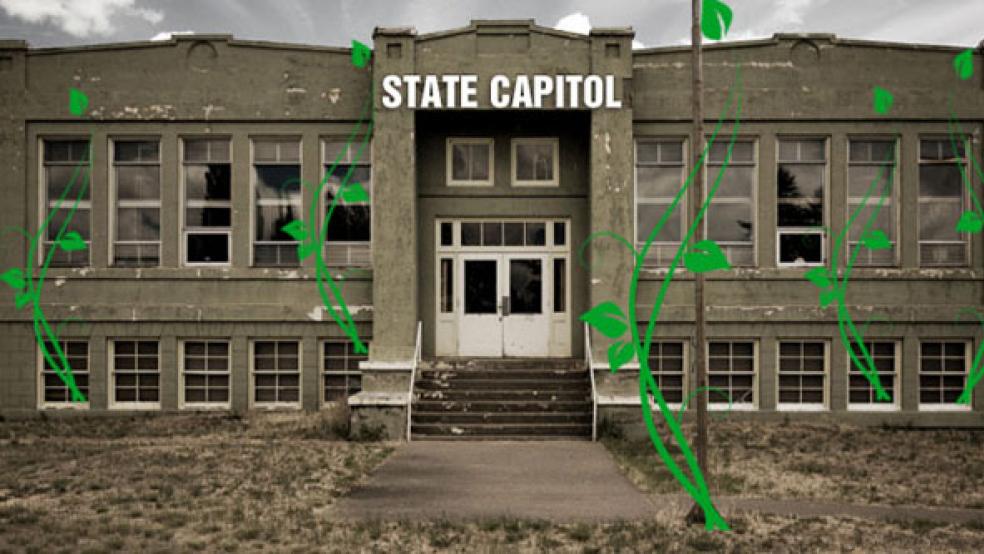Just as state governments are healing from the deep fiscal wound inflicted by the Great Recession, they are confronted by the dual threat of reduced federal help and ever increasing health-care costs, according to a new report.

Governors are bracing for substantial cuts in federal aid in the immediate future, even if Washington policymakers agree on an alternative to a series of budget cuts and tax increases set to go into effect in January.
Meanwhile, the spiraling costs of Medicaid, employee health insurance premiums and retiree health care would make it nearly impossible for states to fill the gap caused by expected federal cuts. That means service cuts initiated during the recession would have to go deeper, the report warned.
“To the extent the federal government wants to cost-shift, we don’t have the money at the state level to make up for that,” said Scott D. Pattison, executive director of the National Association of State Budget Officers.
The Fiscal Survey of States, a report released Friday by NASBO and the National Governors Association, found that state revenues for the current fiscal year surpassed pre-recession levels for the first time.
The problem for states is that the revenue is increasing slowly while health-care costs are going through the roof. The result is that many other state government priorities — including higher education, infrastructure development and law enforcement — are being forced to take a back seat.
“We’re encouraged that revenues are still going up and not down,” said Dan Crippen, the NGA’s executive director. “But they are going up slowly and they are not going up enough to cover much of what was cut in the last five or six years.”
RELATED: Tax Exodus: 5 States that Residents Are Fleeing
The report noted that Medicaid, the joint state and federal health-care program for the poor and disabled, now accounts for nearly a quarter of overall state spending — a figure that includes federal grants. Education, meanwhile, accounts for about one-fifth of state expenditures, the report said.
Overall, even as state revenue rebounded in the past year, spending for higher education, public assistants and corrections all decreased, while only Medicaid and K-12 education programs increased, the report said.
State budgets are expected to get only tighter even if Washington hammers out a debt reduction deal to avert the “fiscal cliff.” A bipartisan delegation of governors visited Washington last week to warn Congress and the White House that going over the fiscal cliff would be disastrous for their state economies and budgets. Tax increases would slow economic activity in the states, while automatic budget cuts that lawmakers call “sequestration” would mean less aid for states and less work for firms that do business with the federal government, such as defense contractors. The cuts in federal aid to states, which probably will be part of any deficit deal, would also have a significant effect on states.
“There are fewer revenues in the offing whether there is a [deal] or not,” Crippen said.




